

I’d often wondered what it might be like to join a group travel experience, but I’m not sure I would have taken the leap had it not been for a nudge I got a few months ago from my friend, Jordan. She had learned that a couple of the ladies from the Ban.do team were partnering with Acanela tours and leading a small group trip in Barcelona and Cadaques for a week. She asked if I’d like to sign-up, too. The longest I’d ever been away from my kids was about three nights, so I was a little hesitant on that account, but with a village of support we figured I could make it work. And I’m so glad I did!
I’d be flying to Barcelona and meeting with about 14 others there—none known to me except for Jordan—and we’d be focusing on art and inspiration for the week.
My memories of the week have grown a bit foggier as this was a few months ago now, and even the constructive criticisms I had at the time about the style of travel have dissipated a bit as I look back on the trip with great fondness. I do wish I’d written about it when it was fresher in my mind, but I also have to confess that I did absolutely no research or planning for this trip whatsoever. I bought a small city guide at the eleventh hour and read it on the plane, but otherwise assumed I would just follow the pack, so to speak. I was looking forward to spending the week with my friend. For the most part it turned out to be a nice relief from my usual role as trip-planner. So I worry I have less than usual to share in the way of advice for those planning their own trip there.
Still, here are some other impressions and highlights from those first four days, in Barcelona, along with some of my favorite addresses…

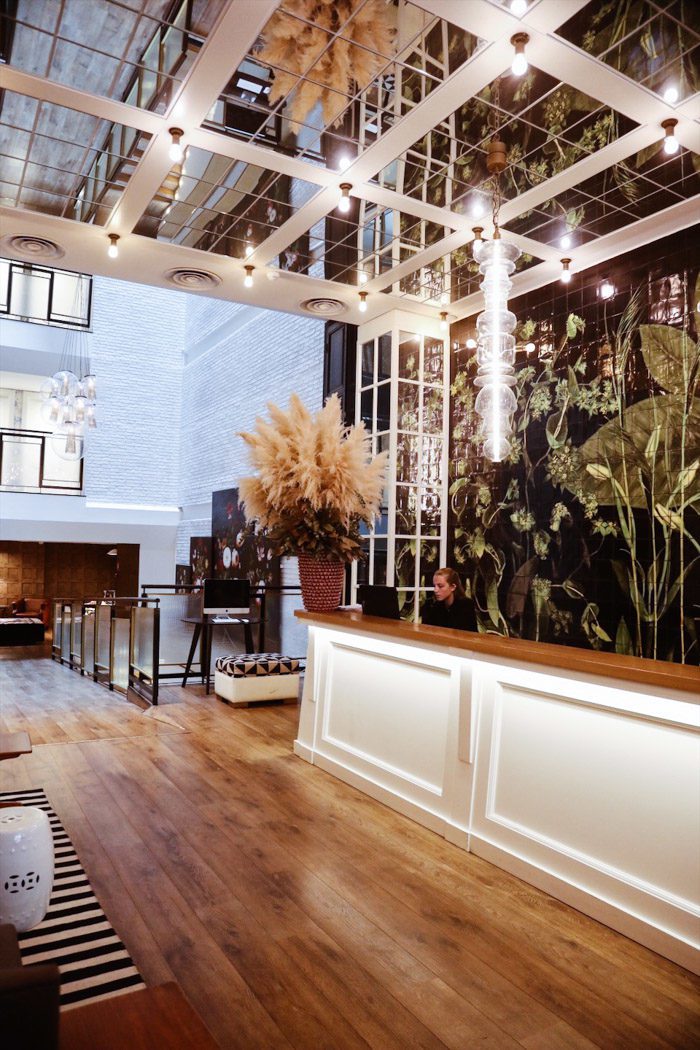


The group was booked at Hotel Ofelias, a small boutique hotel beside the old arena and Plaça Espanya. It had a great design with lots of patterns and light—I found myself wanting to snap photographs of the lobby on more than one occasion—but very minimal rooms that felt calm and clean. It’s location was a bit on the fringe of the tourist center, but not so far that it took very long to get to the major sites, and it backed up to the Parc de Joan Miro—a great expanse that felt like a welcome pause.


There was also a small rooftop pool and a free daily breakfast in a lovely downstairs area. I never really did get off California-time when it came to getting to sleep, so the espresso machine was a welcome sight.

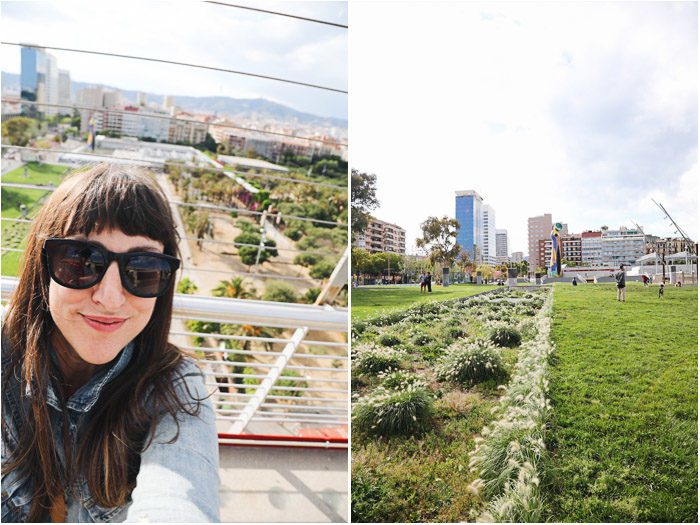

When we arrived, there were a few hours of time to spare before our meet-up for dinner, so I did a quick walk around outside to get my bearings. The park, as I mentioned, was quite large. Families played, couples strolled, dogs ran—I of course found myself making mental notes of what my children (always on my mind) would enjoy and of the amenities, like a public library, that might make this a good home base.
I also took a look around the Arenas de Barcelona—once a bullfighting arena, it was turned into a shopping center and food court after the sport was made illegal in the city. You could climb to the top and look out over the Plaça Espanya (where there were many restaurants), or spend time inside at the shops or the cinema.



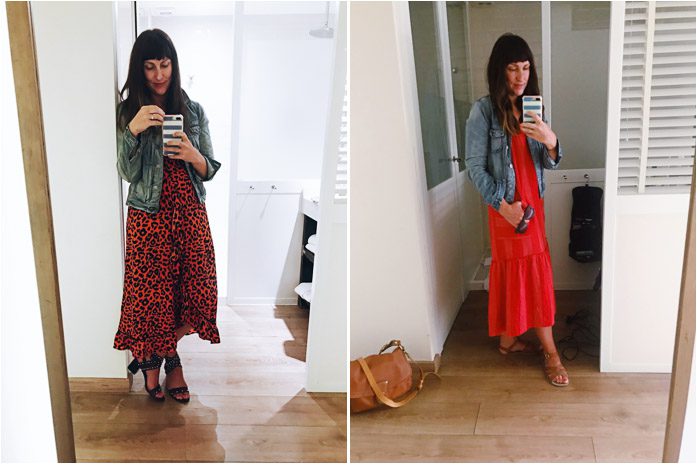
I’d found a direct flight out of Los Angeles and took a small risk in buying a separate (non-connected) ticket from Sacramento to LA, so it seemed especially prudent to limit myself to a carry-on. To make it possible, I stuck to a few colors so as to mix-and-match throughout the week. I found myself wanting to wear dresses and skirts on most days, but perhaps it was the company—there were lots of cute dresses on this trip.


Our first night’s dinner was at a spot called “My Fucking Restaurant” in the Raval. One of the chefs came out and started listing off Mediterranean-style tapas and dishes we could choose from for a tasting menu. Quite a few hands went up with food restrictions: ‘I don’t eat fish’ or ‘I’m a vegetarian,’ but they did an incredible job accommodating all of the different needs. I found myself lamenting that no one else wanted to try the steak tartare, and was relieved when I found a kindred ‘I’d like to try it all’ guest seated beside me. I could sense that the group was large enough that we would probably need to break into smaller parties for most meals out, and wondered how that would go.
On that first night, we all went around and introduced ourselves. It was a great start—so many interesting, creative women!
Our ages ranged from 21 to 40, with most seeming to be about 25. I confess it felt a little strange to be the oldest in the group—and one of only two with children. Our life stages were very different, which brings me to one of my biggest takeaways regarding the group-trip dynamic: if being in similar life-stages or being with very similar travelers is important to you, then you should look not just at the itinerary but also at the guests. Who will the trip will draw? In the end, it was actually nice that I didn’t spend so much of the time talking about my kids, as I may have with other mothers; but it also felt a little strange how little this part of my life, family, came up—it felt like a limit on how intimate the connections being made could ever be, and this kind of trip would be a wonderful way to make new friends that could last a lifetime.

After dinner, we walked back to the hotel. It was a bit of a long walk, but it felt good to be outside. There was one time where I realized we were walking through a part of El Raval full of only men (hardly a woman in sight), which made me uncomfortable—though I believe it had to do with the neighborhood’s religious affiliations—and so we sought out one of the wider boulevards for the rest of the walk. I realized that without having done any of the research myself, I felt disadvantaged as to any areas of the city to avoid and made sure I looked into this a bit more when I got back to the hotel.
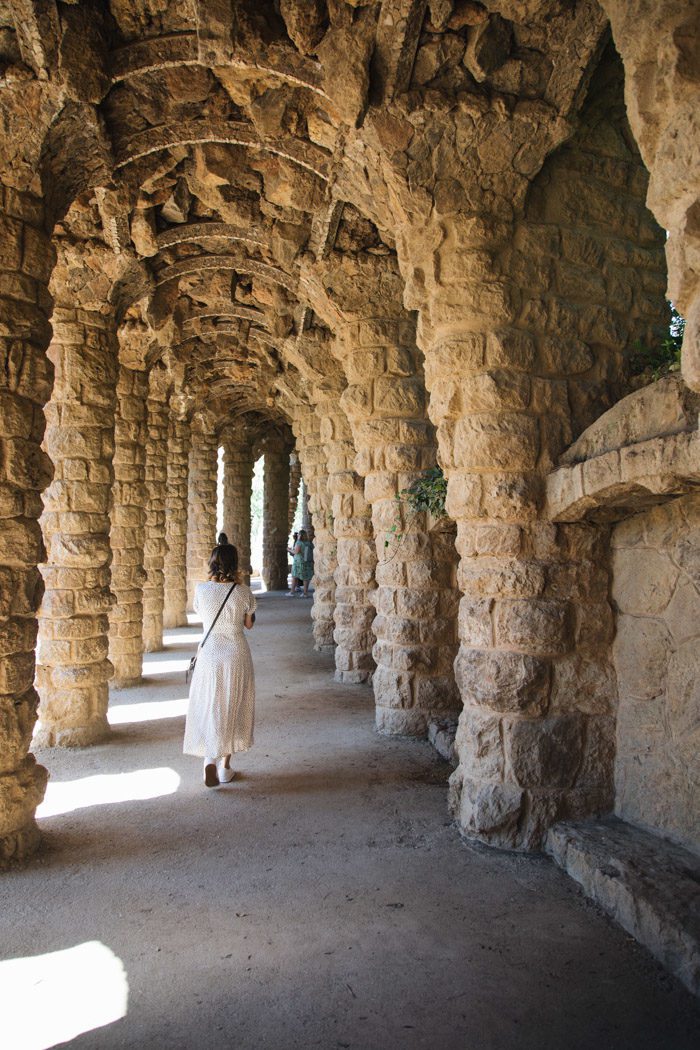
The next morning, we met our tour guide who would be bringing us to some of the city’s major sites on a tour bus. The plan was to begin with Gaudí—perhaps Barcelona’s most famous resident, as his very specific designs are icons of Catalan modernism.
In fact, UNESCO has added seven buildings designed by Antoni Gaudí (1852-1926) onto their World Heritage list: “These buildings bear witness to the exceptional contribution of Gaudí’s creations to the evolution of the architecture and construction techniques in the late 19th and early 20th centuries. They are the expression of an eclectic and very personal style that their creator employed not only in architecture, but also in gardening, sculpture and many other decorative arts. The seven buildings are: Park Güell, Palau Güell, Casa Milà, Casa Vicens, Gaudí’s work on the Sagrada Família’s Nativity façade and crypt, Casa Batlló and the Colònia Güell crypt.”

Park Güell would be our first stop. I had strong memories of visiting the park with Aron, many years prior, and thought I would lay down and recreate a photo I recalled there being of me there in 2003.

It turns out, however, that the photo is actually of Aron—I suppose twenty years together means I’m now confusing who did what?


Next, we joined the crowds making their way to the incredible Sagrada Família. Five generations have watched as the church has been built, and another watched it today. Construction has continued for the past 135 years! The basilica had actually come a long way since my first visit—and we weren’t able to go inside at that time. It is expected to be completed in 2026.
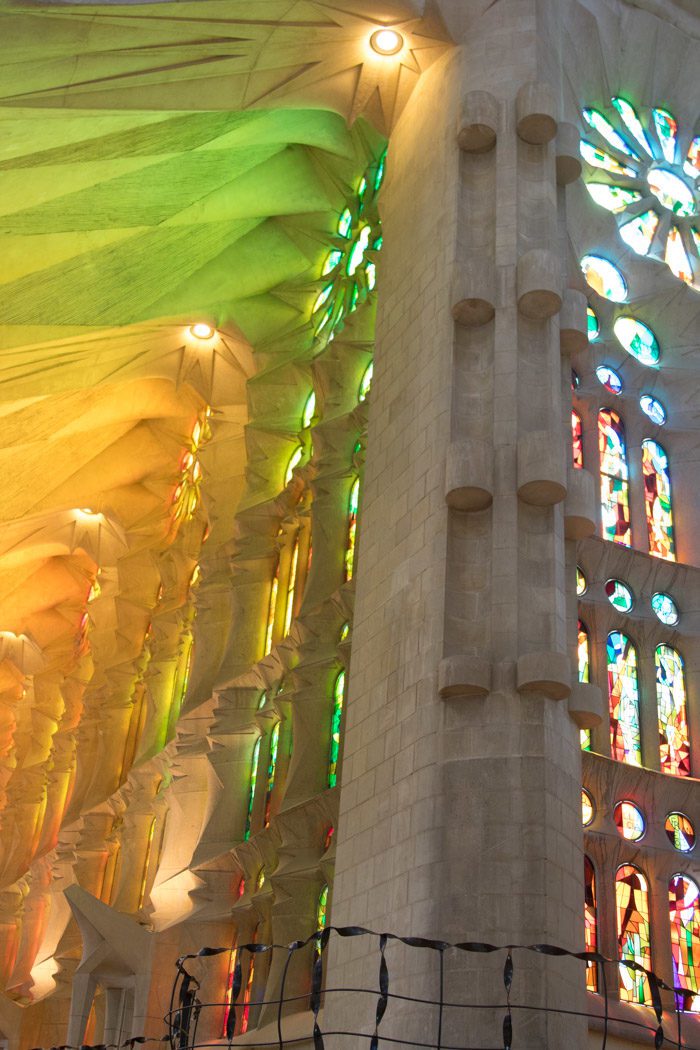

The rainbows created by the stained glass inside were absolutely stunning—like nothing else I’d seen! I could have easily filled half a day there. Note: all of these sites require advance planning and tickets.

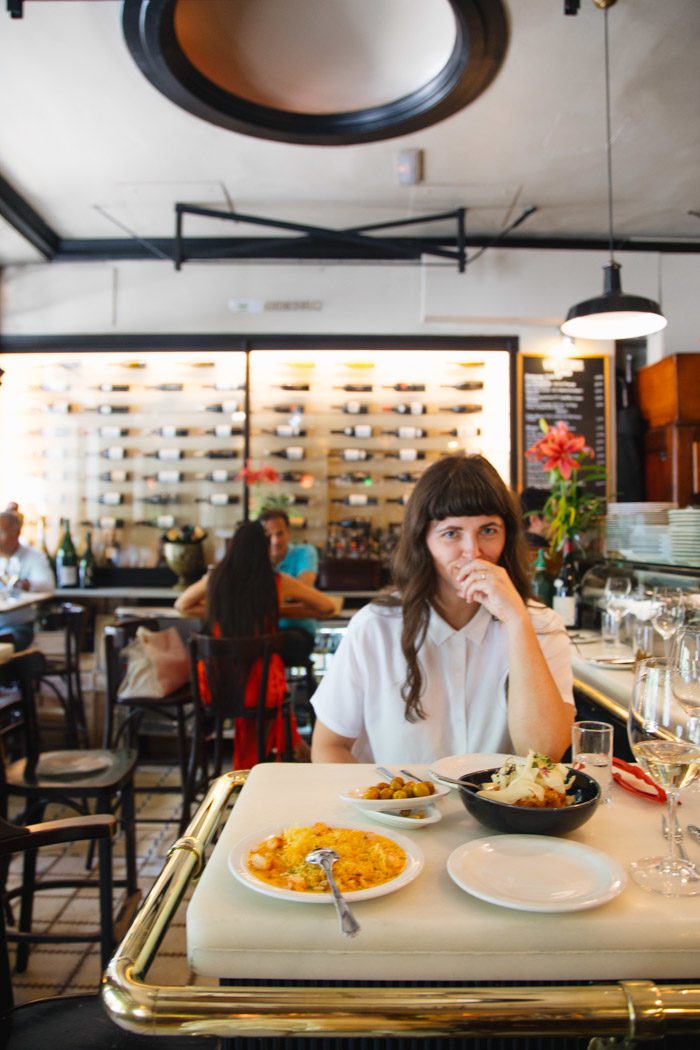
After lunch, dropped across the street from Gaudi’s Casa Batlló (another must-see), Jordan and I split off from the group for some shopping and lunch. She’d gotten some tips from a friend and, after wandering a local hardware store for unique quotidien treasures (like special birthday candles!), we sat down for an all-too brief meal at Bar Mut.
Apparently it’s a well-loved spot and with good reason. It was, I think, the best food I had on the trip. There was one dish they recommended, Egg carpaccio—with crispy angel hair, gambas, pine nuts, and loads of butter—that we agreed we would marry if we could. I wish I could taste it again right now.
More time had been originally planned for the Quadrat d’Or, a living museum of turn-of-the-century architecture—Casa Batlló, designed by Gaudí in 1905, La Manzana de la Discordia, and Casa Mila, but it seemed like the itinerary was frequently shifted. I was happy that I had seen many of these sights on that earlier trip, but I imagine some of the others may have felt upset about the changes. Another priority for a first-time visit would be Parc de la Ciutadella, a historic park with lakes, gardens, museums, and promenades.
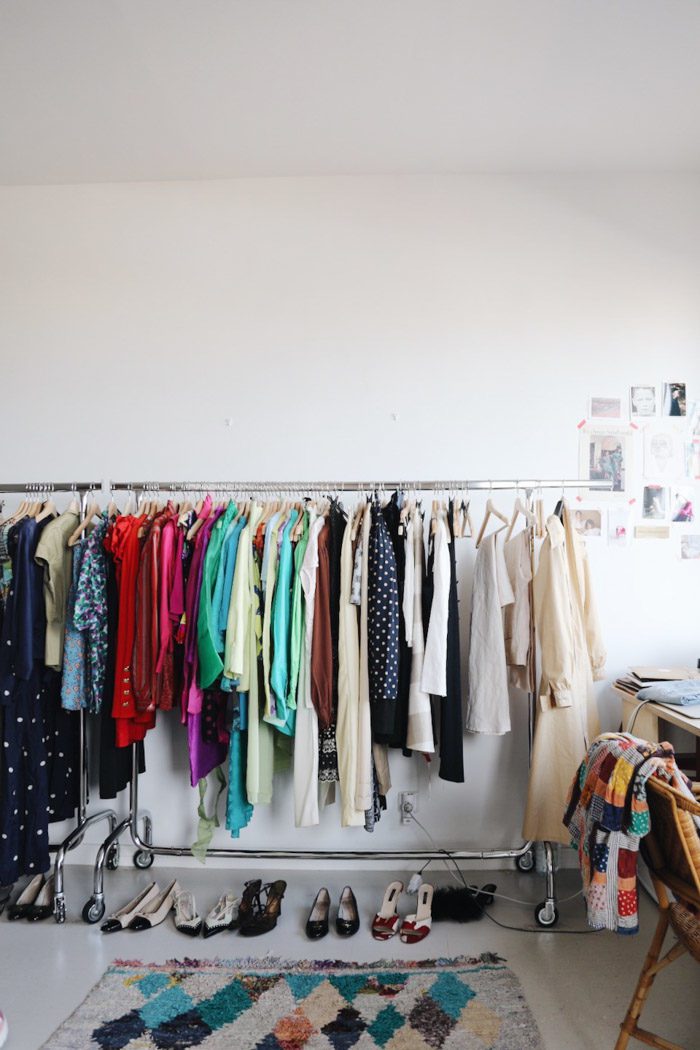

Afterward, we took a taxi to rejoin the group at Alabama Collect, a vintage showroom with a carefully chosen collection of clothing and accessories. I felt like everyone was giddy with excitement—and a few came away with some really lovely finds.
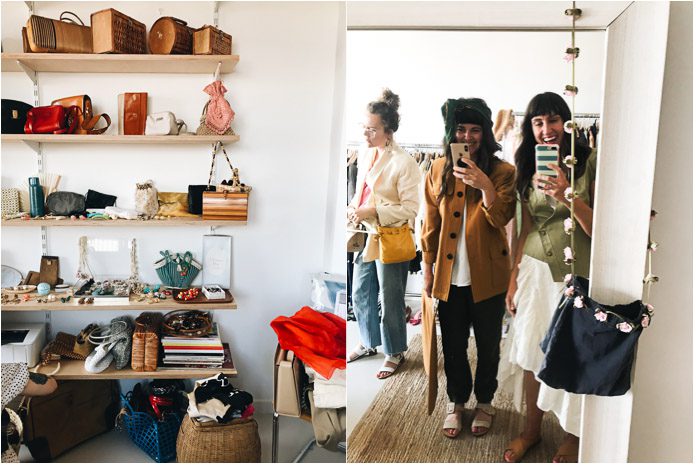

It made the flea market we ended up at next, Mercat dels Encants, seem especially disappointing by contrast. That said, a few of the stationers in the group had success with vintage ephemera and paper goods, while a couple of us chose, instead, to sit down at a bar on the edge of the market and order drinks.


For dinner, a large group was heading out to The Green Spot, a vegetarian restaurant close to the water. I decided to join, but we arrived to find that the restaurant had closed for the night to celebrate an honor they’d just won for best vegetarian restaurant. I’d been a bit on the fence about the selection—I don’t want to seem like a meat-head, but it seemed a shame to miss out on all the jamon while in Spain—so I took this as a sign to bid everyone an early goodnight and go off exploring on my own.

I took the opportunity to walk some of Las Ramblas, to get lost in the Gothic quarter, and find myself a nice little spot called Raó to sit down with a cocktail, some tortilla, and a large plate of jamon iberico. Soooo good.
There were moments I wished I had someone to share the evening with, but it was ultimately the right choice to split off—I would have regretted it later had I not gotten to have some of these things, and it set a tone for the rest of the week. In general, I noticed that those that split off to meet their own priorities were probably the happiest with their experience of the group trip.
I remember thinking that the Ramblas, with its bird market (now closed) and many vendors, with all of its crowds, was very overwhelming 15 years ago—it still was not my favorite of the places I walked around as it seemed so full of tourists (and, actually, one of our group later saw a mugging there)—but either I had changed after years of living in New York or the city had. It never felt overwhelming.
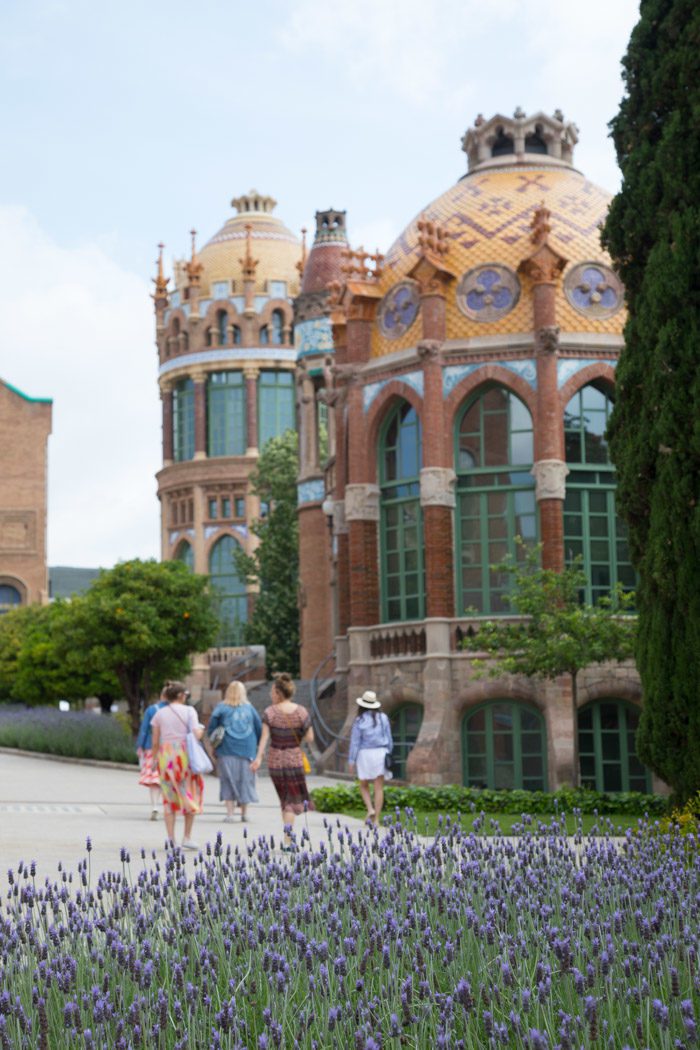

The following day took us to Hospital de la Santa Creu i Sant Pau—another modernist masterpiece that functioned as the city hospital up until 2009. It was remarkable for its gorgeous tile mosaics and unique color pairings.


Just look at those ceilings!
A couple of my favorite parts of this visit, beyond the design: there were some wonderful photographs of what it looked like being built at the turn of the century that featured the beginnings of Sagrada Familia as well. And there were beautiful gardens with orange trees and lavender visible from the windows. I also noted a nice gift shop with a wonderful children’s book selection.


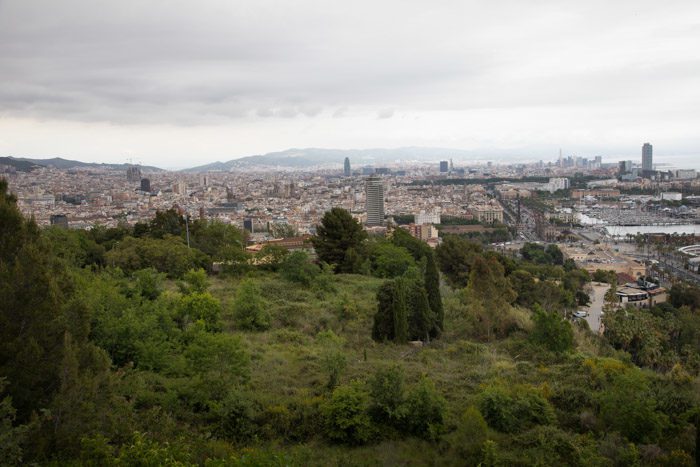
Next, the bus drove us up the hill of Montjuïc, overlooking the harbor for panoramic views of all of Barcelona. With some history and our bearings, we settled on an array of afternoon plans—starting with La Boqueria, the large public market.


It’s common to go to La Boqueria for lunch provisions—and I understand it’s the number one attraction in the city with tourists. But Jordan had another lead for us—this time for a place called Cañete, not far from the market. We made a quick phone call to reserve a table and walked over.
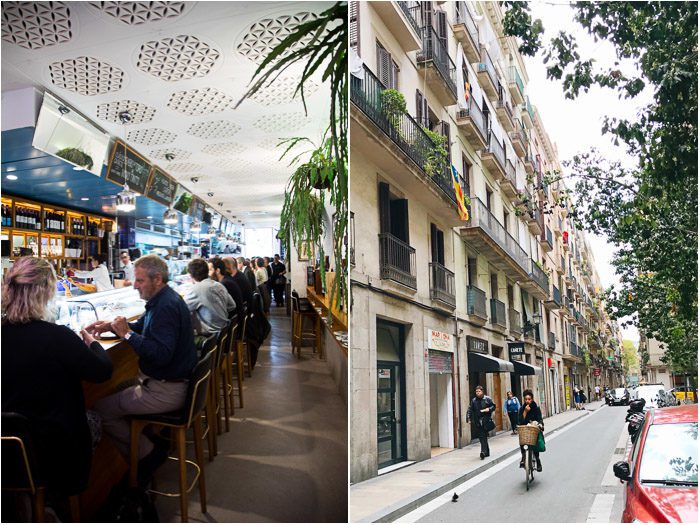
Classic Spanish tapas with a touch of formality is how I’d describe it. If you’d like it to be a bit less so, you can wait for a stool at the bar rather than reserving a table. It was on the pricey side, but everything was so delicious—from the Andalusian gazpacho to the pine nuts and burrata. Conde Nast Traveler, I later learned, wrote: “If you’re going to have only one tapas dinner while in Barcelona, have it at Bar Cañete.” Glad I did!


After lunch, we met the others for a brief workshop (the trip leaders talked about the aesthetics of joy) and some shopping nearby. On a street called Dr. Dou we found a few great spots, like Carolina Blue (beautiful ceramics) and Lantoki—where they make the clothing in the back (I bought a skirt!).


And one of the ladies in the group suggested drinks at Casa Bonay—a hip boutique hotel that seemed cousin to the Ace. The cocktail menu in the downstairs bar, King Kong Lady at Libertine, was wonderful. I had something classed Brutal and the Beast, made with Butter-washed brandy, Vermouth, Amaro Averna, and Banana and House Tonka Bitters. There was also a rooftop spot, a coffee club, and a tiny bookstore—”the smallest in Barcelona.”
Some of the others went for tattoos one of the afternoons, or broke off for shopping, and one took a moped tour up to the top of Tibidabo where the Sagrat Cor Church (Sacred Heart Church) and Tibidabo Amusement Park sit.

If you wanted to visit larger shops like Uniqlo or Mango (or better yet, a Mango outlet!), those were all around the corner from this spot.

Meanwhile, another subset of the group had gathered at Gringa—a Spanish-Mexican spot serving burgers to the tune of ’90s American music. It wasn’t at all what I would have expected to be eating on this trip, but it was delicious, too. I had a “Pigme” burger (oh so flattering) with truffle oil and it was wonderful. Plus, the scene felt local and lively.
One more round of drinks close to the hotel, and we called it a night!

Casa Vicens, Gaudís first house that he designed, was next. Built between 1883 and 1885 as a summer house for the Vicens family, and declared a Unesco World Heritage site in 2005, Casa Vicens wasn’t on the tourism map when I visited. The more transparent approach to the home’s restoration was interesting, and I found myself admiring the way they’d integrated the design of visitor spaces—bench seating and spiral staircases, for example, with the design of the home. It was remarkable!
t



As for the home itself, the layers of patterns and colors and elaborate wood-working were really interesting to see. Everything was so vibrant.


And then again, the new visitor spaces and their seamless integration caught my attention as well. I particularly loved the design of the museum cafe: Hofmann.
Our tour guide explained that the Hofmann bakery and patisserie is a Barcelona institution, especially known for their mascarpone croissants. I bought one and saved it for later and can attest it was heavenly. Certainly one of the best pastries, if not the best, I can recall. In fact, it was so good that, later on, I passed another Hofmann location and joined a line of people waiting to go in. I assumed they were reopening after the siesta, but it turned out it was the line waiting to go into their cooking school. I started following them in but realized my error only when everyone was picking up a water bottle and sitting down.

At this point in the trip, I felt like I was just hitting my stride—and yet it was to be our last day! Jordan and I split off for some shopping, but decided that to make the best use of the limited and precious time we would go on our own. (Priorities!)
I chose to stay in the Villa Gràcia—a village of Barcelona that once sat outside the medieval wall—and right away found a store called Olokuti Gràcia selling a pocket guidebook to the neighborhood. It was part of a “Walk with Me” series and I’m so glad I picked it up. It led me to a Vermut bar (vermouth, at La Vermuteria del Tano) to sip and eat pinxtos at the counter, to secret courtyards, and it led me to some great little shopping streets. I bought myself a new purse, some sandals, souvenirs for the kids, and a bottle of vermouth for Aron.
Vermut, by the way, is a drink you should try while in Barcelona. Catalan vermut is spicy and herbaceous (think rosemary and orange—but each producer uses its own secret recipe). I found a shop called Antic Celler from which to buy some to bring home and the man first offered me a plastic water bottle to fill from the wooden barrels lining the walls. But when I told him it would be in my suitcase, he showed me some better-sealed vessels.
This quickly became my favorite neighborhood thus far. But I also loved El Born, where many of the streets are so narrow that there is a no-cars-allowed policy in much of it, and where there are many cute restaurants and boutiques.



Later, I caught a ride back toward the old town center to peek in at the Miista shoe store, and then meet everyone for a tour of the Picasso museum.
Other favorite shops along the way: 8PM, Etnia Barcelona glasses (that’s a bowl of colored acetate), Colmado, Ivori, and the children’s store, Tiny Cottons.
Also recommended to me by others on the trip: Apres Ski, for jewelry; Chandal for art books and art objects; La Variete for home goods; and Miscelanea for art prints with a cool bar upstairs.


Regarding the Picasso museum, I think devout Picasso fans will love it, as it’s very extensive when it comes to his early years. Pablo Picasso donated nearly 2,500 of his paintings, engravings and drawings to the museum in 1970. But I sensed that most of our group’s patience for the collection was low and would imagine others might want to adjust expectations as to what kinds of Picasso pieces are housed there.

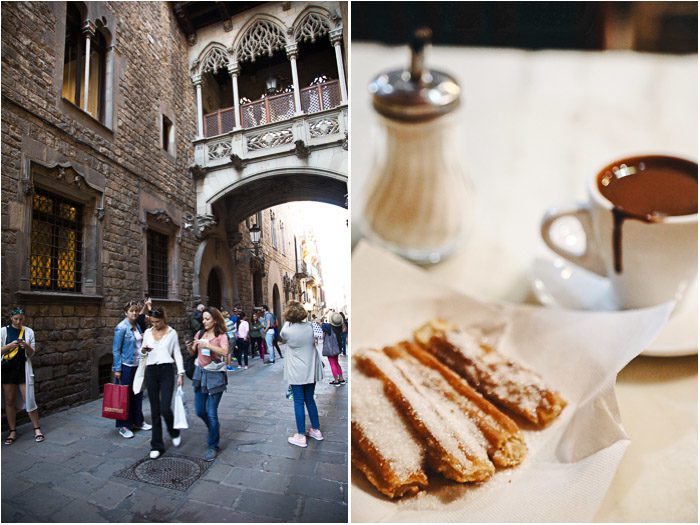
For the last of sightseeing before going back to the hotel to change for dinner, I decided I couldn’t leave Barcelona without seeing its Cathedral and having some fresh churros con chocolate. These were from La Granja 1872 in the Barri Gotic. I also briefly wandered into the Museu del Disseny de Barcelona (Design museum), but only at the gift shop. It looked like a great stop.
There were of course many (many) other things I didn’t have time to see or do, but I’m already mentally planning a return trip with the family.


That night, I met with about half of the group for dinner at Bistrot Levante, which sits in a pretty (and quieter) plaza within the Barri Gotic. Again, its meze-style cuisine was not what I was expecting in Catalunya, but it was delicious all the same. We all asked them to surprise us and they just came up with a whole meal for us—which was kind of amazing! Definitely turned out to be a surprise highlight.

And finally, to cap off the first part of the week, a few of us walked over to Paradiso—a speakeasy where you enter through the Pastrami deli fridge. It’s not exactly a secret (there’s a rope outside!), but it’s still a little extra bit of fun. Inside waits a tropical hideway! It was a great last night, but it did make the windy road to Cadaques a little miserable the next day.
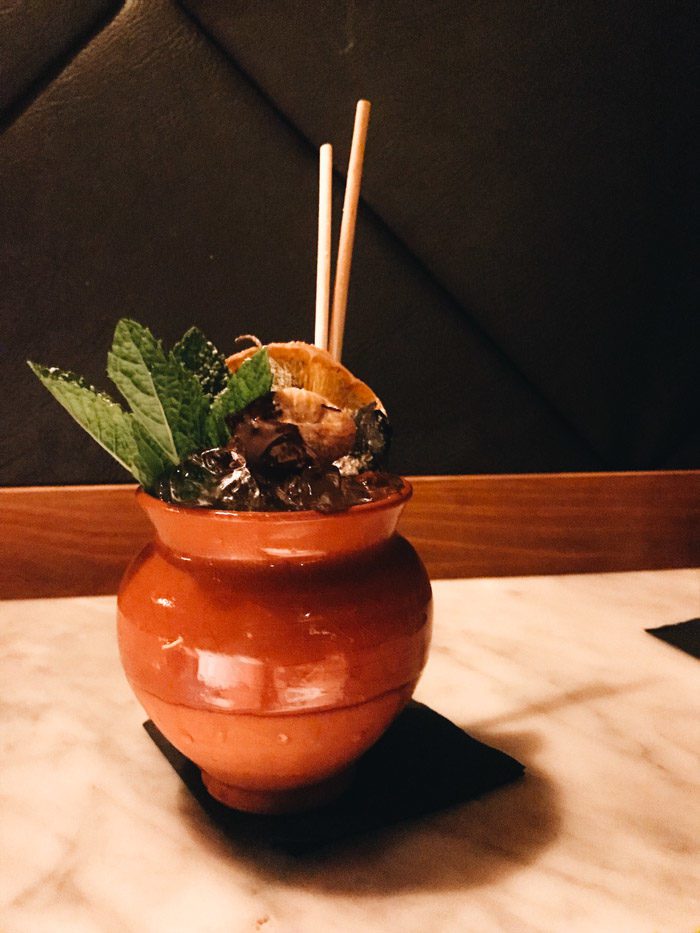
It would be hard not to enjoy four days in Barcelona with a bunch of talented women, so no big surprise here: this was a lot of fun!
I did find myself, however, trying to come up with some takeaways should I (or anyone, really) want to sign up for a group-led trip like this. I definitely came away happy that I went, but I also have some thoughts about what I might seek out in a group trip were I to sign up for another. (And I’d like to, one day.) I gather they’re becoming more common as everyone looks for more tailored experiences.
I thought it was really interesting, actually, that so many of the travelers in this group were just beginning their 20s. At that age, I was staying in hostels and carting around a backpack. (And seeing so many others getting off trains doing the same—which I did not on this trip.) I remember going to Europe for three weeks when I was 20, and only eating at a restaurant twice—once on my first night and once on my last. And I gathered that many of these younger women were on a tighter budget as I was, and felt stretched thin. They felt unfairly surprised by any extraneous costs beyond the upfront tour price. Conversely, those who had more of a budget may have felt impatient with itemizing or wished they could splurge more. These things were never discussed, but I got the feeling it occasionally caused some feelings of division. The expected daily budget, of course, be something one would want to be really clear about before committing.
Another thing I noticed: while I enjoyed the freedom of not planning, I also found that in not planning I lost some of the fun of anticipation. I also found myself worrying whether I was missing something great. So one’s happiness going with the flow may influence whether a group trip would suit her. I decided to do just that this time, but I would still occasionally find myself noting the things I may have done differently. It’s hard not to when I’m used to being the lead on things like this.
Finally, the theme on this trip was fairly loose. That suited me just fine this time, but I do think I’d like to try a more workshop-focused trip—like a photography excursion or a cooking workshop. Besides the enrichment factor, it would be nice to share some experiences where everyone has the same goal or where everyone shares an interest. That might also help a little with the different life-stage part of the equation.
I’d be curious to hear if others have done a trip like this, and to hear what you thought? And if you haven’t, would you? Also, have you been to Barcelona? What would you add for a return trip?
P.S. How to order off a menu in another language. And next, I’ll share the second half of the trip—the seaside town of Cadaques.






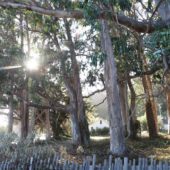
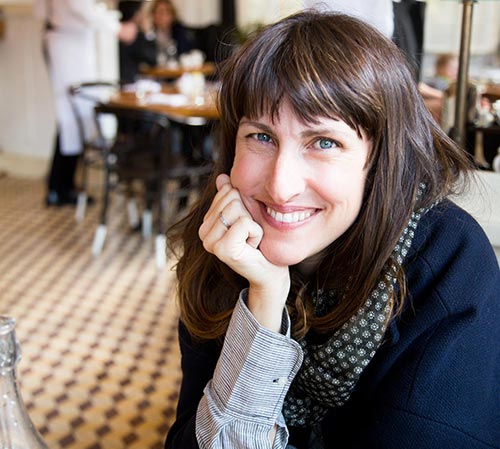
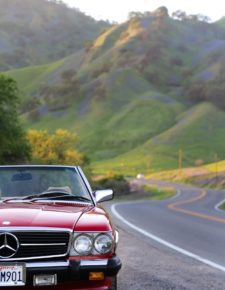
















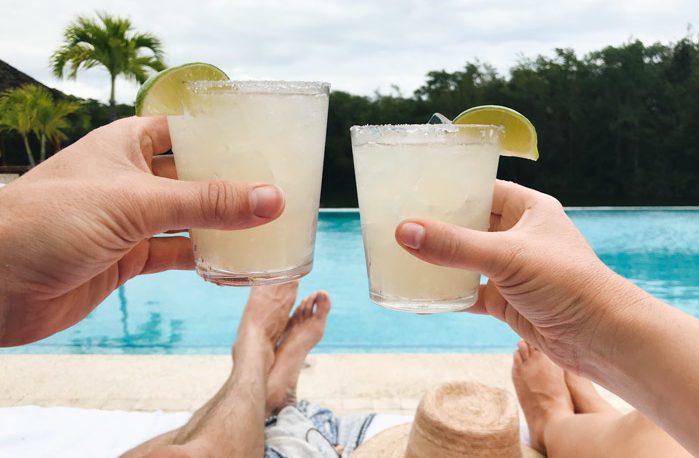
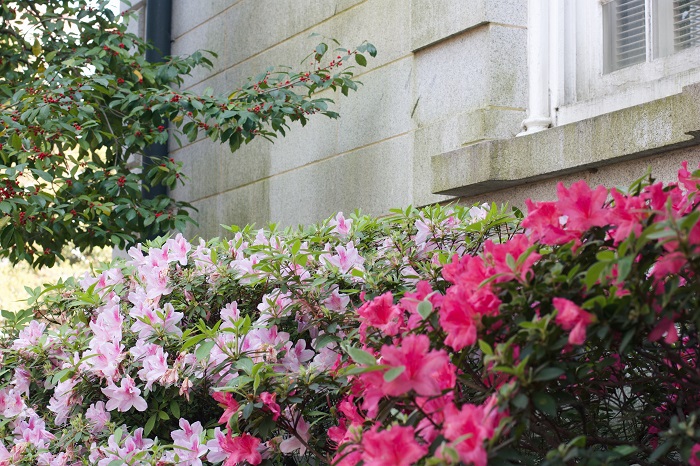



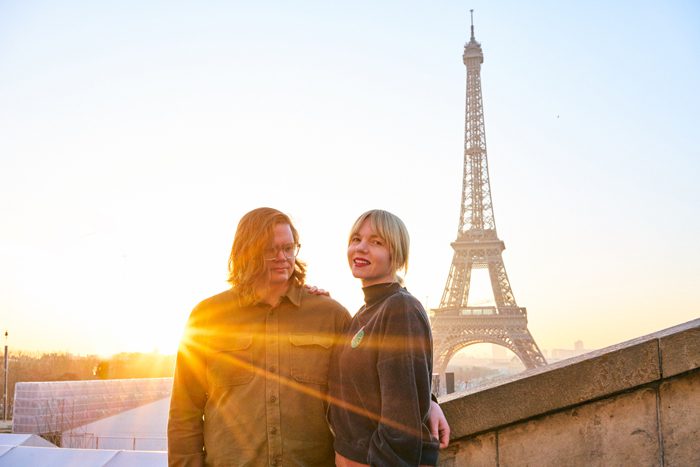

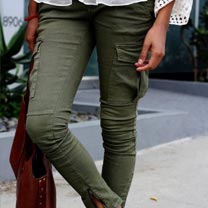





22 Comments